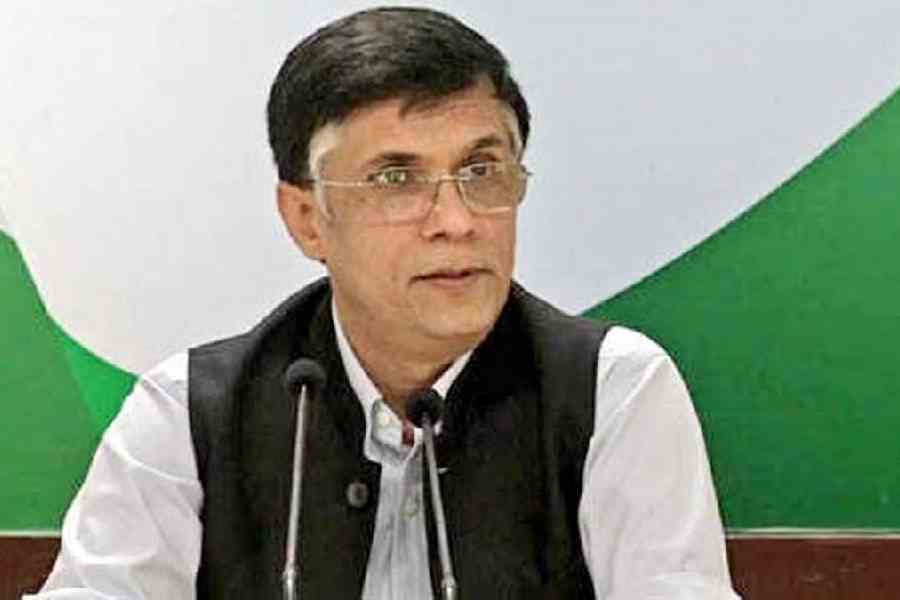Irrespective of the result of the 59th quadrennial presidential election, the emerging structural realities of the United States of America exacerbated by the acts and the omissions of President Donald Trump will outlast his term.
First, Trump’s messaging, amplified through social media, has legitimized the utterances of the fringe, online, right-wing extremists. This has consequences as it has instilled fear among minorities and within society. An alleged terrorist plan to kidnap the present Michigan governor, Gretchen Whitmer, by white supremacist terrorists was foiled recently.
Second, in the midst of growing inequality within the US exacerbated by Covid-19 and the irreversible realities of the new economic structure, the middle-aged, white, blue-collar population faces further shrinkage of opportunities. This gulf should not be seen in the context of binary tensions between the Red states and the Blue coastal states, which have been the beneficiaries of the new economy. The economic gap will rise even within the traditionally red states as places like Austin in Texas, Raleigh in North Carolina, Atlanta in Georgia and Charleston in South Carolina join the new economic model.
There is migration of the highly-skilled tech workforce taking place from the Democratic Party’s bastions of northeastern states to these relatively warmer climes and tax-friendly hubs. This trend is shaping new political and economic realities. The suburban and rural parts of the Red states remain conservative and racially homogenized — mostly white, with disturbing aspects like a rampant opioid crisis. New political, social and economic fault lines are being drawn within the states, and this may fuel fresh social and ideological tensions.
Related to this point is the ongoing intensification of cultural wars in the US. On one side is the population that values America’s multi-ethnic and multi-national character. They are ardent supporters of the US taking on the mantle of global leadership on issues like climate change. The Silicon Valley and allied companies belong to this camp. The US’s tech enterprise draws talent from across the world. On the other side is another group that remains seeped in such values as the racial supremacy of the whites and are climate-change denialists. There is an economic enterprise underwriting this project. In the 2017 book, Dark Money: The Hidden History of the Billionaires Behind the Rise of the Radical Right, Jane Mayer methodically illustrates how Charles and David Koch, the enormously rich proprietors of an oil company based in Kansas, laid the foundations for conservative movements that were anti-government and opposed climate change. The funding of various movements, think tanks and newspapers inadvertently created a fertile landscape for Trump to exploit in the 2016 elections.
Third, scarred by the history of slavery, relations between minorities — particularly African-Americans — and the police have always remained tense in the US. This had been accentuated further by what many describe as the growing ‘militarization of the police’ in various states and counties. Radley Balko, the author of Rise Of The Warrior Cop, informs “the police departments are increasingly using equipment designed for use on a battlefield, including tanks, bayonets and grenades.” He adds that the wars in Iraq and Afghanistan had created a massive surplus of many weapons, which were given away to police departments across the country. This is coupled with the fact that the police’s organizational structures prevent reforms. There is the sheer size of various decentralized police units; there are reportedly more than 18,000 state and local police agencies. Strong police unions have exercised disproportionate powers and have often protected erroneous colleagues in various cases of alleged police brutality. The political leadership has faced backlash from these unions whenever it has raised questions about police abuse. The infamous recurring tensions between the New York City mayor, Bill de Blasio, and the New York Police Department are a case in point. Interestingly, the Police Benevolent Association, NYC’s largest police union, reportedly “broke with a longstanding tradition of not endorsing presidential candidates and threw its support behind President Trump, as many officers view him as more of an ally to their pro-police ‘Blue Lives Matter’ movement than Joe Biden.”
Four, while the US has become increasingly diverse, this growing diversity is still not fully reflected in critical federal institutions. Even the state department, the face of the US to the world, doesn’t reflect the nation’s diversity. A widely shared article in The New York Times, “The State Department Was Designed to Keep African-Americans Out”, by the former American diplomat, Christopher Richardson, noted that “even in 2020 the State Department struggles to recruit and retain black officers”. “The Government Accountability Office recently found that the percentage of African-Americans in the Foreign Service increased only to 7 percent from 6 percent between 2002 and 2018. In the Trump administration, only three out of 189 American ambassadors serving abroad are black.”
Five, the pandemic shows no sign of relenting. More than 2,00,000 Americans have already died; nearly the same number is estimated to die during the winter. The impact has been disproportionately borne by poorer communities. The inept handling of the crisis has exposed the vulnerabilities of the medical infrastructure, including an inefficient insurance system. The first year of the new administration, particularly the first quarter of 2021, will continue to be consumed by the fight against Covid-19.
Six, with a conservative majority in the Supreme Court’s judicial composition — the Senate has confirmed Amy Coney Barrett to the Supreme Court — there is a foreseeable threat to various progressive legislations, particularly those relevant to minorities and women. These include the Affordable Care Act, Roe vs Wade and the appeals that come before the apex court from various states on issues linked to voter suppression.
Seven, the US immigration system is presently predicated on the family reunification model, not on the points system as other Western countries such as Canada. The Covid-19-induced economic crisis will make the discussions on the issue of initiating pathways to citizenship for millions of undocumented migrants, mostly from Central America, even more complex.
Trump’s first term and broader trend lines are not all gloom and doom. The importance of institutional checks and balances has been re-emphasized. The press regularly exposed executive errors. In conjunction, several career civil servants acted conscientiously, resigned, and have been whistle-blowers as they refused to be cowed down by executive high-handedness. The impact of toxicity unleashed by the Trump administration was greatly mitigated as many states refused to comply with federal executive orders. The protests against acts of brutality against African-Americans had an all-time-high representation from the racial groups, particularly younger citizens. The idea of human dignity and protection became even more mainstream. It took deeper societal roots, particularly among millennials and super-millennials, some of the most diverse generations in the last 244 years of the US’s existence.











